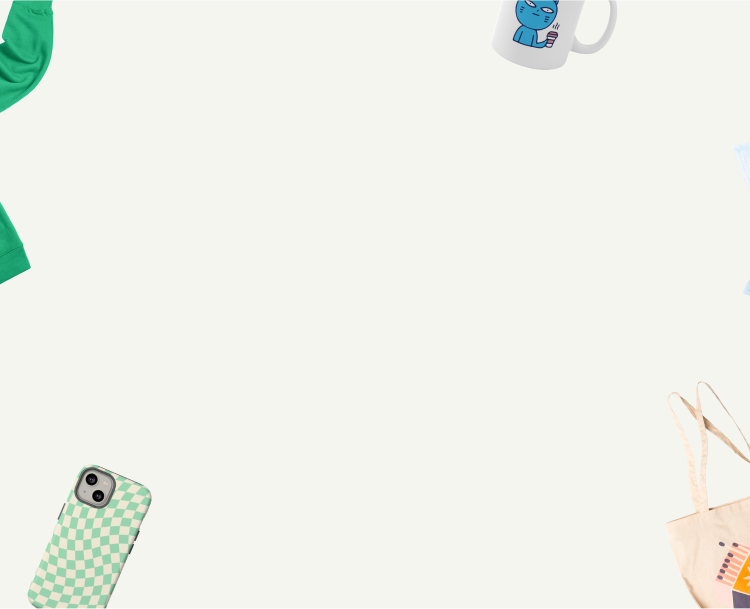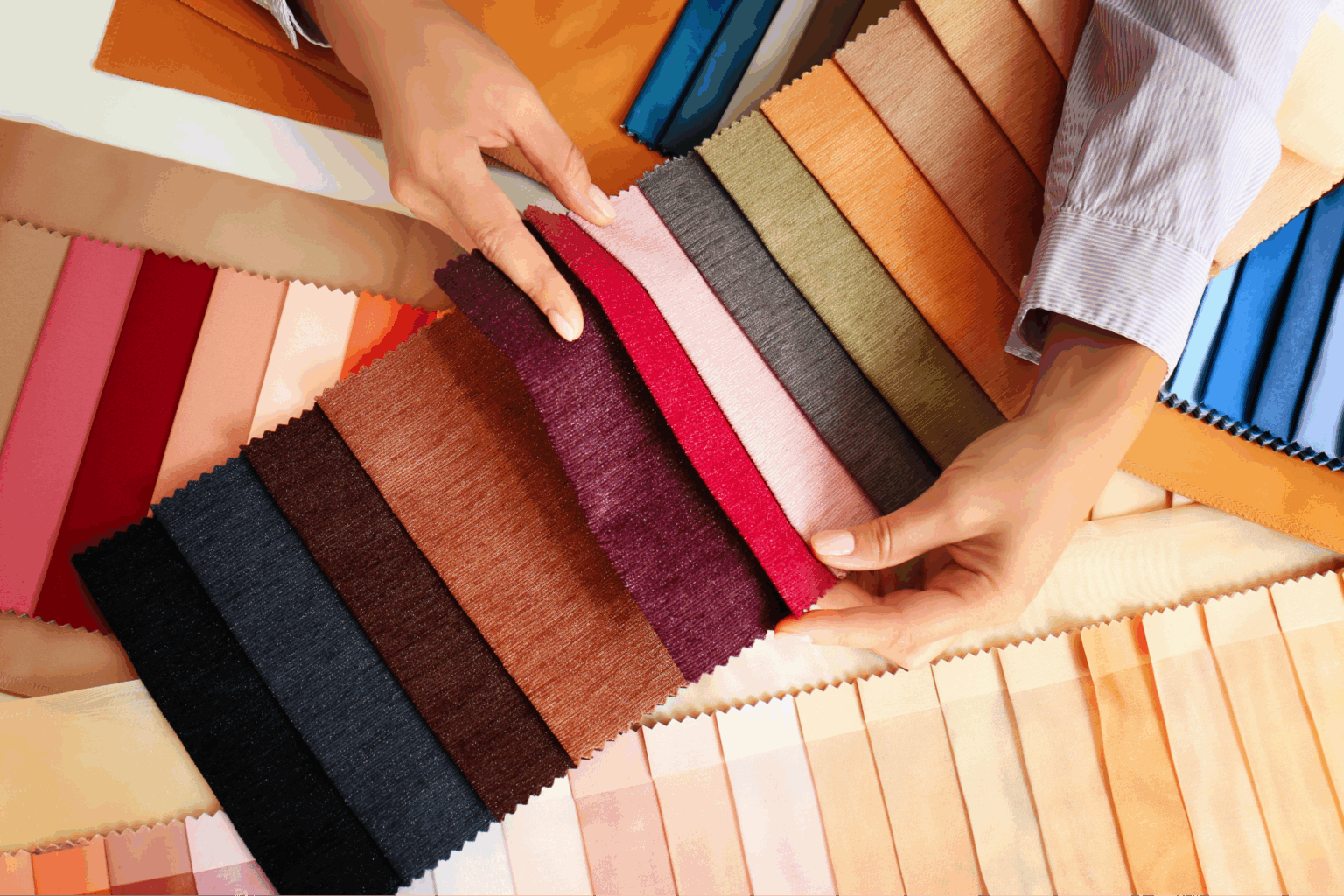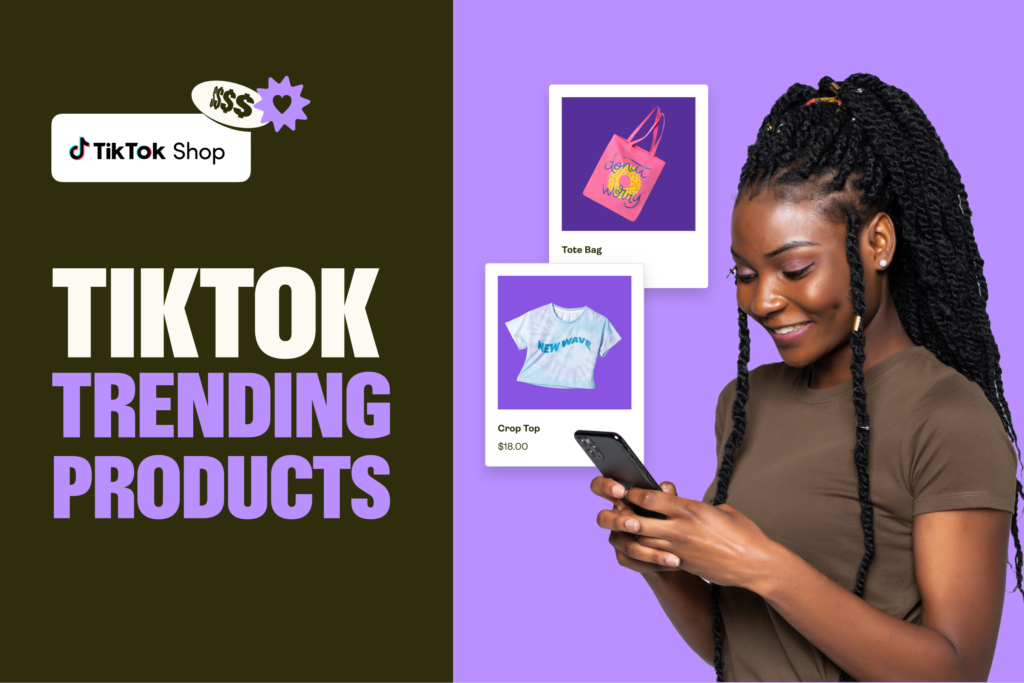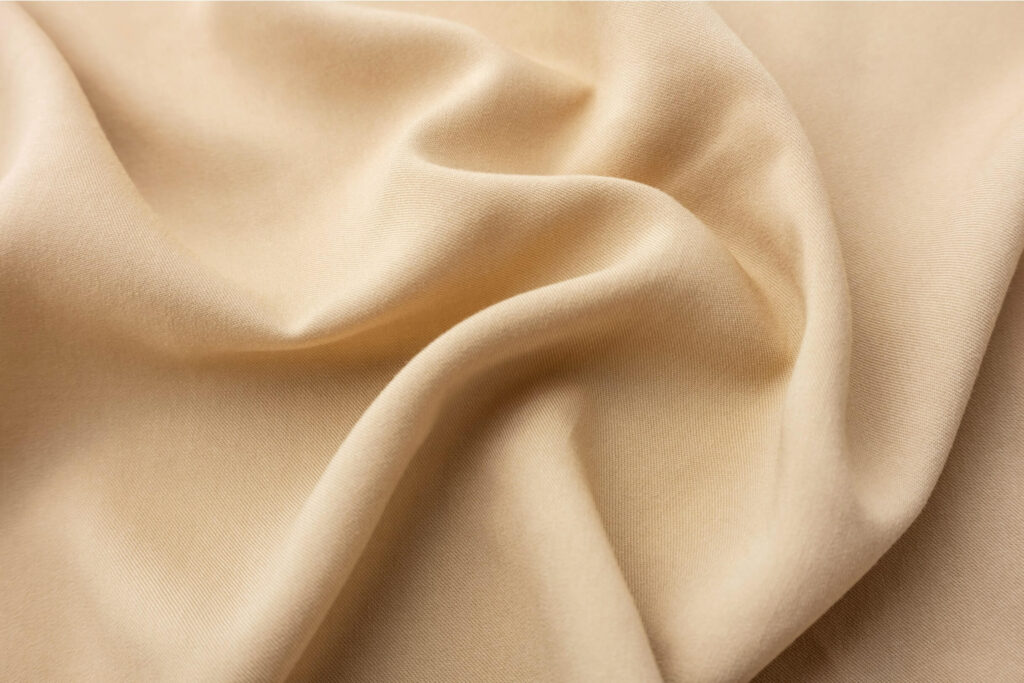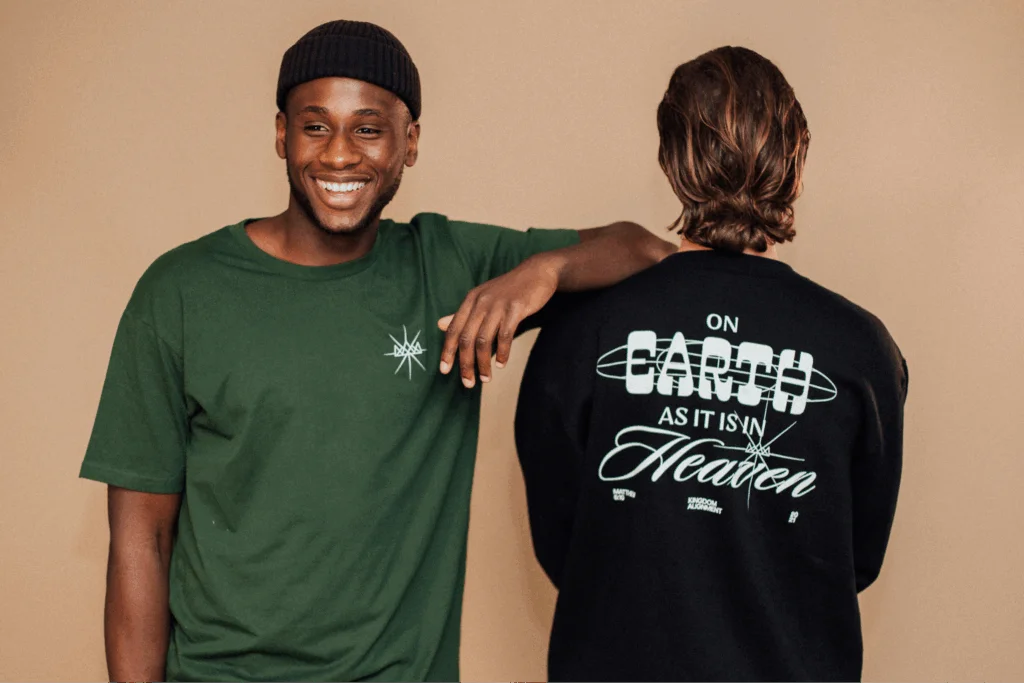Bring your design ideas to life
Choosing the right fabric isn’t just about looks – it’s the foundation of every great product. For eCommerce sellers, print-on-demand (POD) entrepreneurs, and small clothing brand owners, fabric choice affects everything from print quality to customer satisfaction.
In this guide, we’ll break down the most common fabric types and how to use them effectively. Whether you’re launching your first online store or refining your current catalog, knowing your materials will help you craft products that truly deliver.
How fabrics are classified
To understand the different fabric types used across the textile industry, it’s important to recognise how fabrics are categorized. Classification of different clothing materials usually follows two main principles: origin and structure.
Based on origin, fabrics fall into three major groups:
- Natural fibers: These are sourced from plants or animals, including cotton, linen fabrics, silk, and wool. Known for their breathability and comfort, natural fibers are commonly found in everyday clothing.
- Synthetic fibers: Engineered through chemical processes, synthetic fabrics such as polyester, nylon, and acrylic are valued for their durability, wrinkle resistance, and moisture-wicking properties.
- Blended fabrics: By combining natural and synthetic fibers, manufacturers can produce fabric types that offer the best of both worlds, like cotton polyester blends that balance softness and durability.
From a structural perspective, fabrics are grouped by how the fibers are formed into textile surfaces:
- Woven fabrics: Made by interlacing threads at right angles. Gingham, twill fabric, and satin are classic examples. Woven and canvas fabrics are typically more stable and durable, ideal for heavy-duty clothing.
- Knitted fabrics: Formed by interlacing yarns, knitted fabrics are known for their stretch, making them perfect for sportswear, tights, and other apparel that requires flexibility. The plush feel and comfort of knitted fabric make it a favourite among designers and consumers alike.
- Non-woven fabrics: Unlike the previous two, these are made by bonding fibers through mechanical, thermal, or chemical means. Common in industrial processes, non-wovens are used in products like medical fabrics, filters, and upholstery backings.
Understanding fabric classifications helps you choose the right fabric for your project and determine how it should be printed, maintained, and worn across various garments and decor applications. Each type of fabric – from cotton and silk to polyester and fleece – offers unique properties that affect comfort, durability, and suitability for specific products.
Natural fabrics
Natural fabrics come from plant- or animal-based fibers. They offer breathable, soft, and often eco-friendly options that people have relied on for centuries in both fashion and home textiles.
1. Cotton
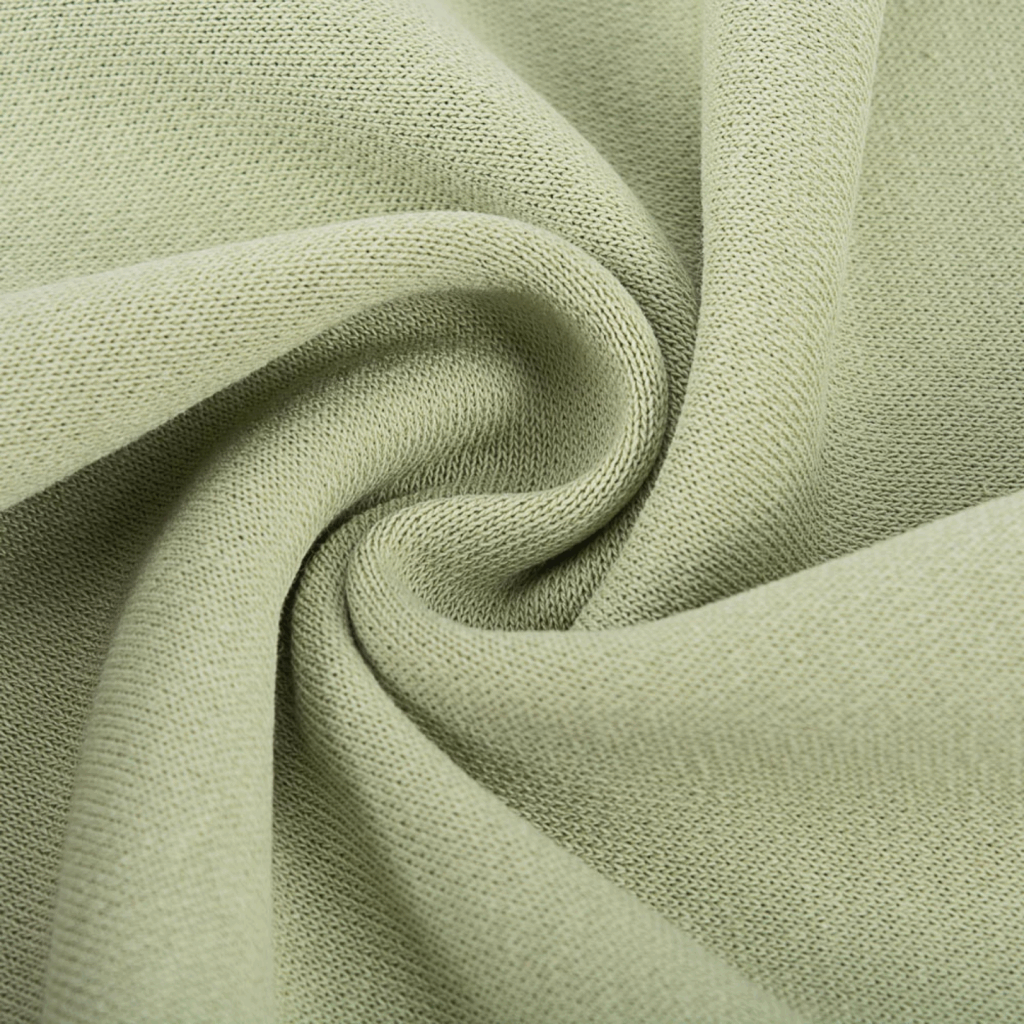
Cotton is among the most popular fabrics thanks to its soft, breathable texture and versatility. Made from the natural fibers of the cotton plant, it’s widely used in t-shirts, interior decor, and everyday apparel. It’s easy to work with and highly absorbent as a plain woven fabric, making it perfect for embroidery, digital printing, and heat transfer. It offers consistent results across many product types.
2. Linen
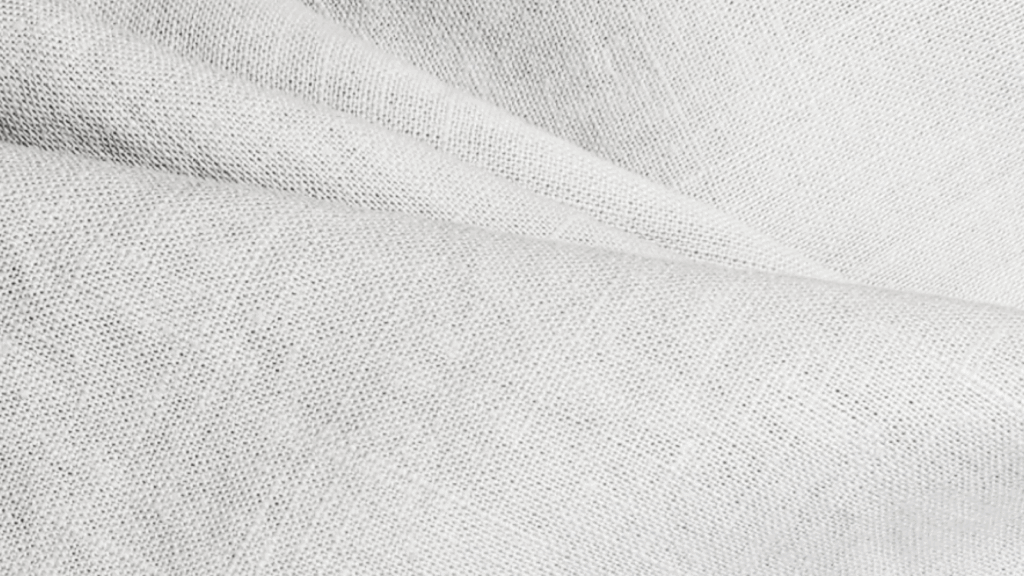
Derived from the flax plant, linen fabrics are known for their strength, durability, and lightweight feel. With a naturally crinkled surface and breathable texture, linen is a favourite among fashion industry professionals for evening wear, summer clothing, and relaxed home decor. It also works well for upholstery. Thanks to its crisp texture, linen fabrics are exceptionally compatible with screen printing, making them a versatile and stylish option across multiple fabric types.
3. Wool
Wool, sourced from animals like sheep and cashmere goats, is a stable fabric prized for its natural warmth and moisture-wicking abilities. This natural knitted fiber is perfect for winter, sports wear, and even decor items like throws and rugs. With its dense pile and insulating properties, wool handles felting and acid dyeing well, making it a versatile choice.
4. Silk
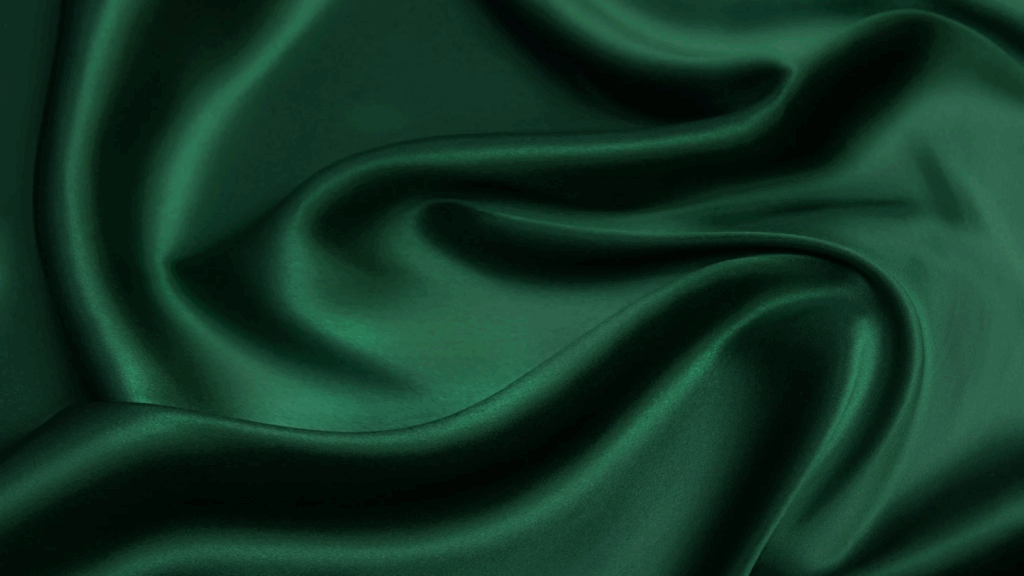
Silk is known for being both lightweight and strong. It’s a top choice for evening wear, delicate fabric accents, and elegant upholstery. Silk beautifully absorbs reactive dyes, preserving its rich, vibrant colors. Among the many fabric material types, satin, rayon, and silk are prized for their smooth textures, sheen, and elegant drape, making them ideal choices for formal apparel and luxurious fabric designs.
Synthetic fabrics
These fabric types are crafted from chemical processes. Compared to many natural fibers, they offer enhanced durability, flexibility, and resistance.
5. Polyester
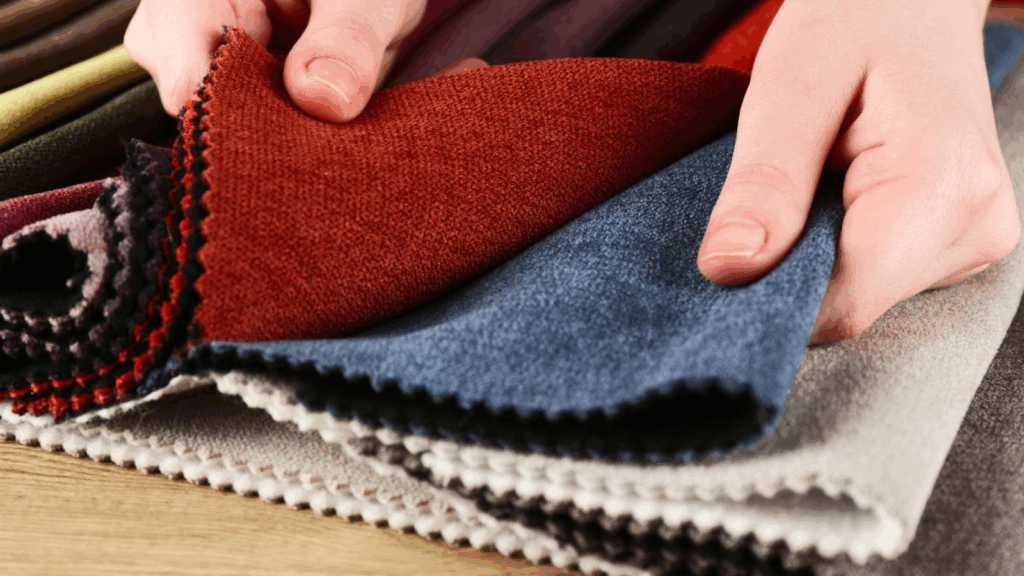
Polyester is a widely used fabric celebrated for its flexibility, wrinkle resistance, and versatility. Common in sportswear and commercial textiles, it holds color well and dries quickly. Thanks to its smooth surface and synthetic fibers, polyester is especially well-suited for sublimation printing, making it a top choice in the print-on-demand world for vibrant, long-lasting designs.
6. Nylon
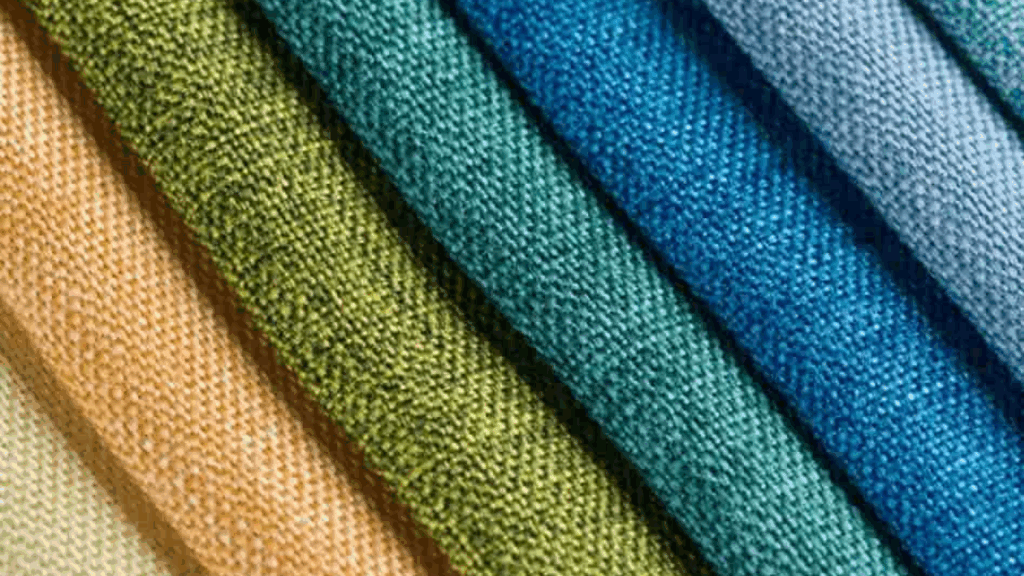
Nylon, a popular synthetic fiber, is known for its exceptional strength, elasticity, and resistance to abrasion. Thanks to its lightweight and durable qualities, nylon is often used in outdoor gear, padding, and industrial applications like seat belts, nets, and ropes. It holds up well under tension and retains shape, making it ideal for garments requiring stretch. Screen printing and acid dyes adhere well to its smooth surface, delivering vibrant, long-lasting color on this smooth artificial fabric.
7. Acrylic
Acrylic is designed to replicate the warmth and delicacy of wool, making it a go-to material for winter clothing, faux fur, and cozy home decor accents. It’s lightweight, resistant to moths, and offers a plush feel with a dense mass. Acrylic is compatible with disperse dyes, allowing for rich coloration, especially in garments requiring both warmth and color retention.
8. Spandex
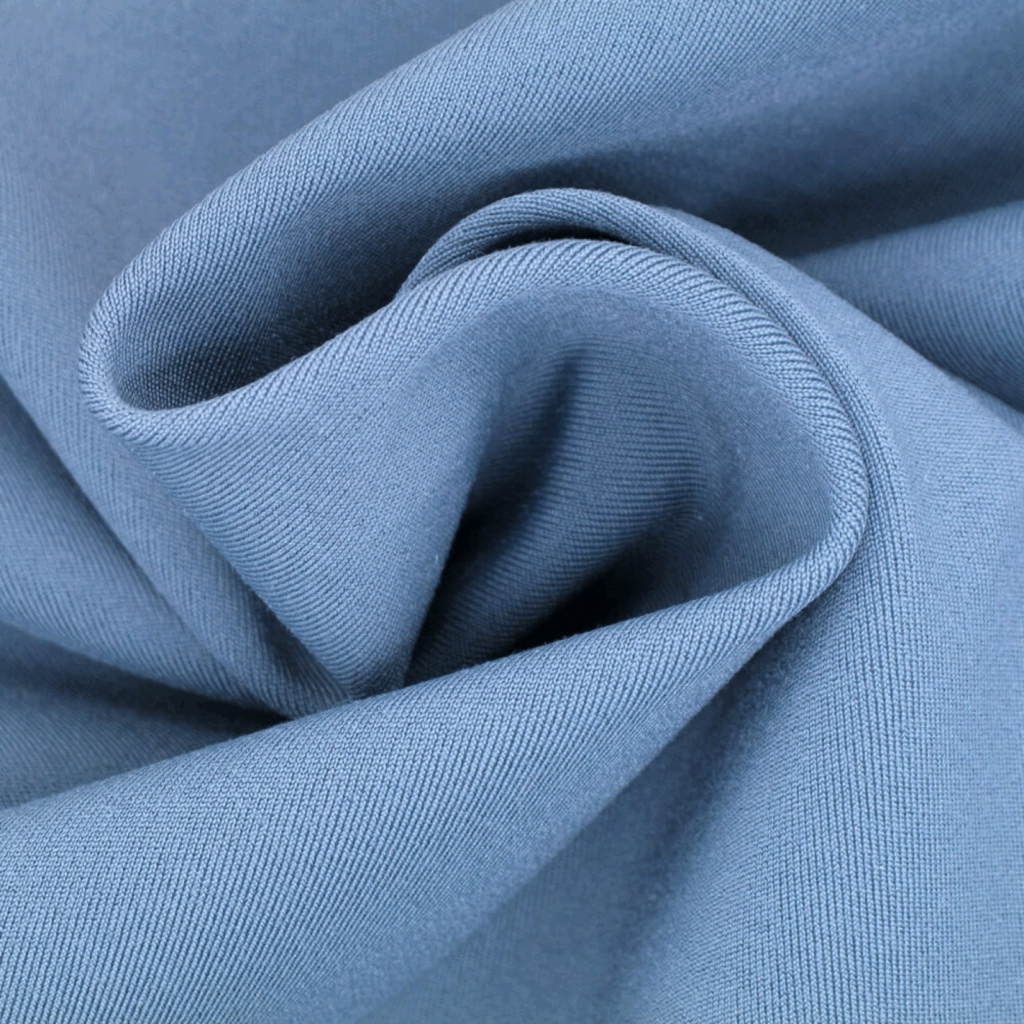
Spandex, also known as Lycra or elastane, is a synthetic fabric valued for its incredible stretch and elasticity. Usually found in athletic clothes, it allows for comfort and freedom of movement. Often blended with cotton, polyester, or other fibers, Spandex enhances flexibility and fit. It’s also compatible with heat transfer printing, making it a top choice for function and style.
9. Viscose
Viscose, or rayon, is a semi-synthetic fabric made from regenerated cellulose fibers, usually sourced from wood pulp. It mimics the feel of natural fabrics like cotton or artificial silk, offering a soft, smooth texture. Commonly used in nightwear, blouses, and linings, viscose drapes well and is compatible with digital printing. However, due to its delicate fabric structure, you need to wash it using gentle cycles or handwash settings.
Blended fabrics
Blended fabrics combine the strengths of different fibers to enhance comfort, durability, and affordability.
Cotton-polyester blends are among the most popular fabric types for everyday use, offering a mix of comfort and durability. Ratios like 65/35, 50/50, and 80/20 are found in sweatshirts and hoodies, balancing softness, breathability, and wrinkle resistance.
Wool blends provide warmth and structure for winter, while spandex blends deliver stretch for athletic wear. These versatile types of fabric material balance function and feel, making them essential in clothing, home decor, and more.
Specialty and functional fabrics
Specialty and functional fabrics like denim, velvet, and fleece stand out for their enhanced texture, durability, and specific fashion design and home uses.
10. Denim
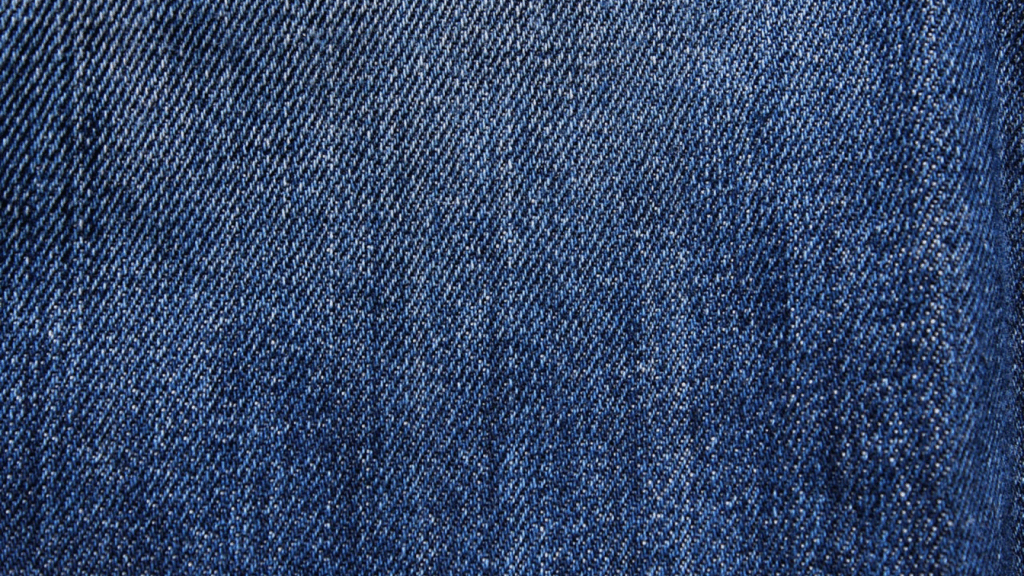
Denim is a classic twill fabric – heavy-duty, durable, and iconic. Often found in jeans, jackets, and canvas fabric items, it holds up well under wear and tear and is ideal for screen printing. Twill, the weave that defines denim, is recognized by its signature diagonal rib pattern, which adds strength and wrinkle resistance. Common twill types include denim, gabardine, and herringbone.
11. Velvet
Velvet is a luxury fabric, offering elegance and comfort. Commonly used in dresses, upholstery, and home styling, velvet adds a rich, tactile quality to any item. Velvet requires gentle care that varies depending on the item. Ideally, dry cleaning or delicate hand washing should preserve its structure and prevent crushing or distortion of the fabric’s surface.
12. Fleece
Fleece is a knitted fabric celebrated for its soft texture and excellent insulation, making it a go-to choice for winter clothing and cozy homeware. It has one smooth side and a reverse side, which is brushed to loosen fibres that give it a napped finish. Made from synthetic fibers like polyester, fleece offers a lightweight feel while retaining warmth. It’s ideal for casual wear and outdoor gear and works well with embroidery, especially for t-shirts, hoodies, and blankets.
13. Satin
A smooth, glossy fabric typically made from silk, rayon, or polyester, though some blends include cotton for added softness. Unlike twill or woven fabrics, satin uses a special weaving technique that creates a lustrous surface, making it perfect for evening dresses, lingerie, and luxurious home decor.
14. Technical fabrics
Technical fabrics such as Gore-Tex are engineered for performance, offering properties like water resistance, breathability, and durability. Used in protective outdoor clothes, they provide reliability in extreme conditions. Due to their unique characteristics, these fabrics often require advanced methods for branding or decoration, such as heat transfer or laminated printing techniques.
Eco-friendly and sustainable fabrics
Eco-friendly and sustainable fabrics, like organic cotton, hemp, bamboo, Tencel, and recycled materials, are increasingly favoured in fashion for their lower environmental impact, biodegradability, and alignment with conscious consumer values.
15. Organic cotton
Organic cotton is grown without harsh chemicals or synthetic pesticides, making it a safer choice for both the planet and consumers. This natural fiber is used in interior decor and upholstery. Known for its smooth texture and breathability, organic cotton supports a more sustainable textile industry and works well with screen printing, DTG, and other popular decoration techniques.
16. Hemp
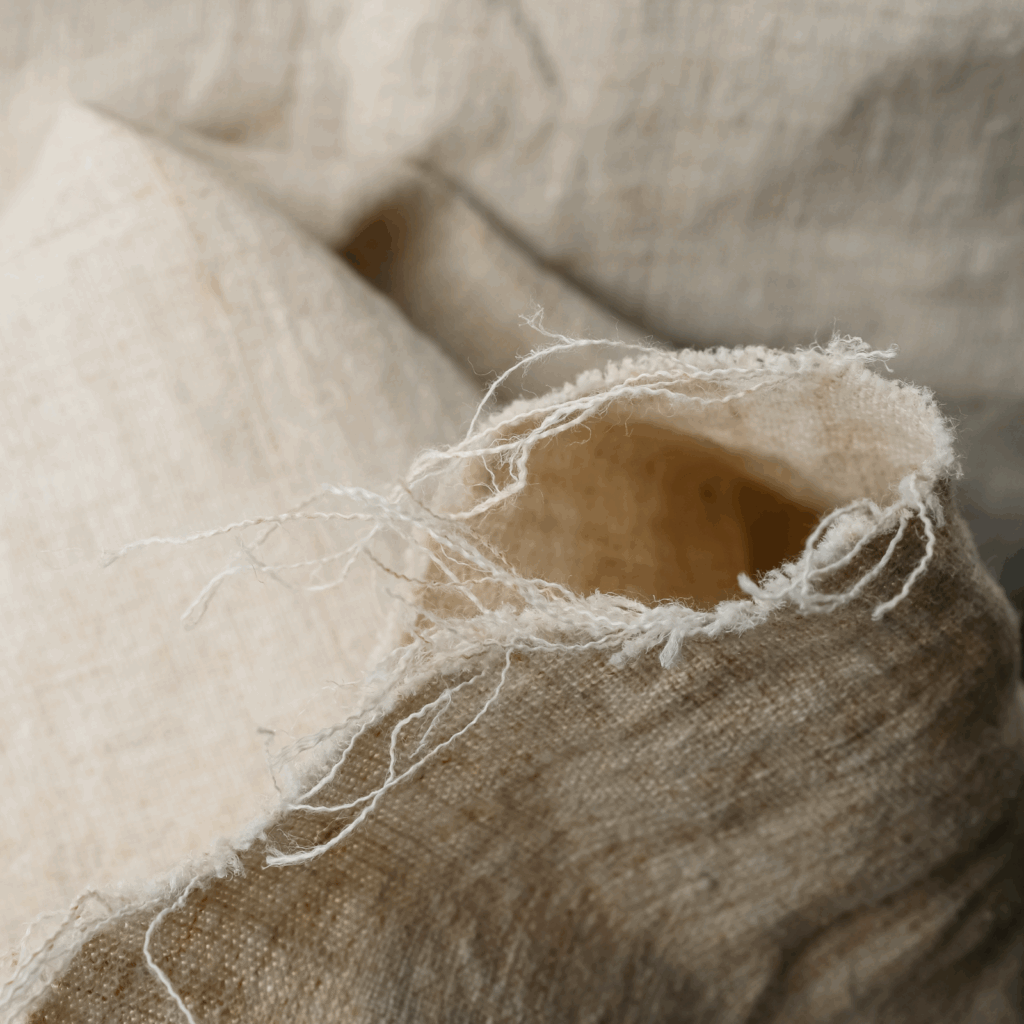
Hemp is an organic fiber known for its strength, durability, and minimal environmental impact. Commonly used in canvas fabric, hemp offers a crisp texture and becomes smoother with wear. It resists stretching and fading, making it ideal for intense use. Hemp fabrics are suitable for screen printing and reactive dyeing, providing eco-conscious creators with a versatile, highly durable fabric across other types.
17. Bamboo
Bamboo fibers create a soft, breathable, and biodegradable fabric ideal for t-shirts, home decor, and casing. Naturally antibacterial and moisture-wicking, bamboo is a popular choice for eco-friendly clothing. Its smooth surface makes it perfect for digital printing and various dyeing techniques, offering both comfort and sustainability in modern fabric applications.
18. Tencel or lyocell
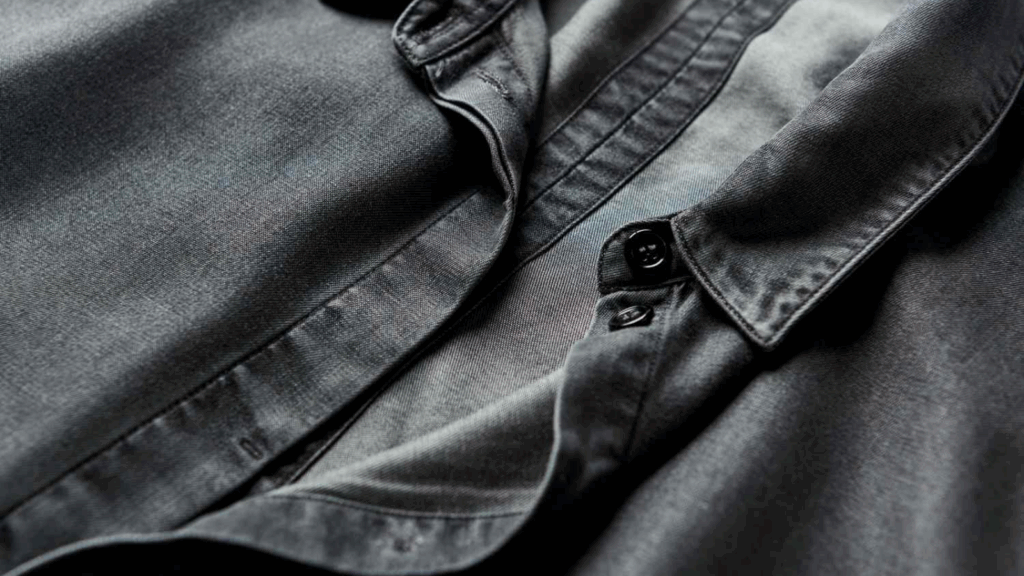
Tencel, also known as lyocell, is a natural fiber prized for its smooth texture, strength, and eco-friendly production process. Derived from wood pulp, its breathable and moisture-wicking properties make it ideal for comfortable, high-quality garments. Tencel fabrics are compatible with both digital and screen printing, making them versatile for various textile applications. Technical fabrics, such as moisture-wicking or waterproof materials, are often blended with cotton-polyester to enhance comfort, durability, and performance in athletic and outdoor clothing.
19. Recycled fabrics
Recycled fabrics are made from post-consumer materials such as plastic bottles, giving waste a second life and reducing environmental impact. They are usually used in athletic apparel and commercial textiles; these durable fabrics offer a sustainable alternative to virgin synthetic fibers. They support a circular economy and work with multiple printing methods, including sublimation and screen printing – making them a smart choice for eco-conscious clothing and textile production.
How to choose the right fabric
When choosing the fabric, consider the intended use: fabrics for clothing, homeware, or upholstery have different demands.
For example, t-shirt fabric should be soft and breathable, while cushion fabric needs more structure and resistance. Comfort is another key consideration. Depending on the type of clothes material, you may need a breathable texture, a lightweight fabric, or a slight sheen for added elegance.
Maintenance plays a big role, too. Some fabrics are easier to wash and care for, making them more appealing for everyday use. Lastly, think about durability. A durable fabric ensures your product holds up over time, especially in athletic or outdoor clothes categories. The best approach is to align the fabric’s properties, such as stretch, strength, and texture, with the product’s use. For example, synthetic fibers are great for performance wear, while natural fabrics suit home goods or garments where comfort and breathability are key.
FAQ
The three main fabric types are natural fibers, synthetic fibers, and blended fabrics. Natural fabrics from plants or animals are prized for comfort and breathability. Synthetic fabrics, made through chemical processes, offer durability and low maintenance. Blended fabrics combine both strengths, enhancing performance, reducing cost, and improving wearability, making them a common choice across modern textiles.
Silk is often considered the most expensive fabric due to its luxurious quality and labor-intensive production process, which involves harvesting delicate fibers from silkworm cocoons. Its quality, genuine sheen, and lightweight softness make it highly desirable for evening wear and high-end fashion designers, driving up its market value. An affordable alternative to silk is rayon, a semi-synthetic smooth fabric made from regenerated cellulose fibers.
Fabrics like fleece, velvet, and faux fur are known for their soft, fuzzy surfaces and cozy texture. They are commonly used in winter wear and padding because they offer warmth and comfort. Their density and smooth touch make them ideal for garments or accessories that require a gentle, soothing finish.
Conclusion
Understanding the various fabric types and their applications is crucial in the clothing industry, home decor, and commercial uses. Considering factors like comfort, durability, and sustainability, you can make informed choices that align with your needs and values.
When launching a print-on-demand product line, understanding different types of fabric helps you choose the right fabric for both comfort and print quality. Whether you’re selecting organic fibers for their eco-friendliness or synthetic fabrics for their resilience, the right fabric can significantly impact the quality and longevity of your projects.
